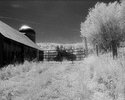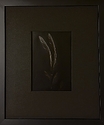removed account4
Subscriber
- Joined
- Jun 21, 2003
- Messages
- 29,832
- Format
- Hybrid
I'm currently testing a developer that might give similar results and tray life without the hard to source (internationally) glycin component
Have fun with that,
I don't keep my Sumatranol130 in an open tray but in a big dollar store tupperware vat .... I use it to process film and make prints, then pour it back in the vat. I develop c41/e6 with it (so the film is b/w but stained from the coffee to mask the orange or yellow masks ) and pour it back in the vat... I've gotten more than 6months of life out of the vat ( and even leaving the developer unused for a month or 2 or 3 ) ... hundreds of prints and rolls and sheets of film through it ... the 130 is about 20cc/L of stock ansco 130 ... maybe its 1.5 - 2 gallons of developer total... usually when I hit 6 months I get rid of 1/2 or 2/3 of it and make another couple liters. what I have in the vat now is 2 years old and I last used it a few months ago and it worked fine ... I wish it didn't last so long, I've like 30-40lbs of green coffee in my garage.





